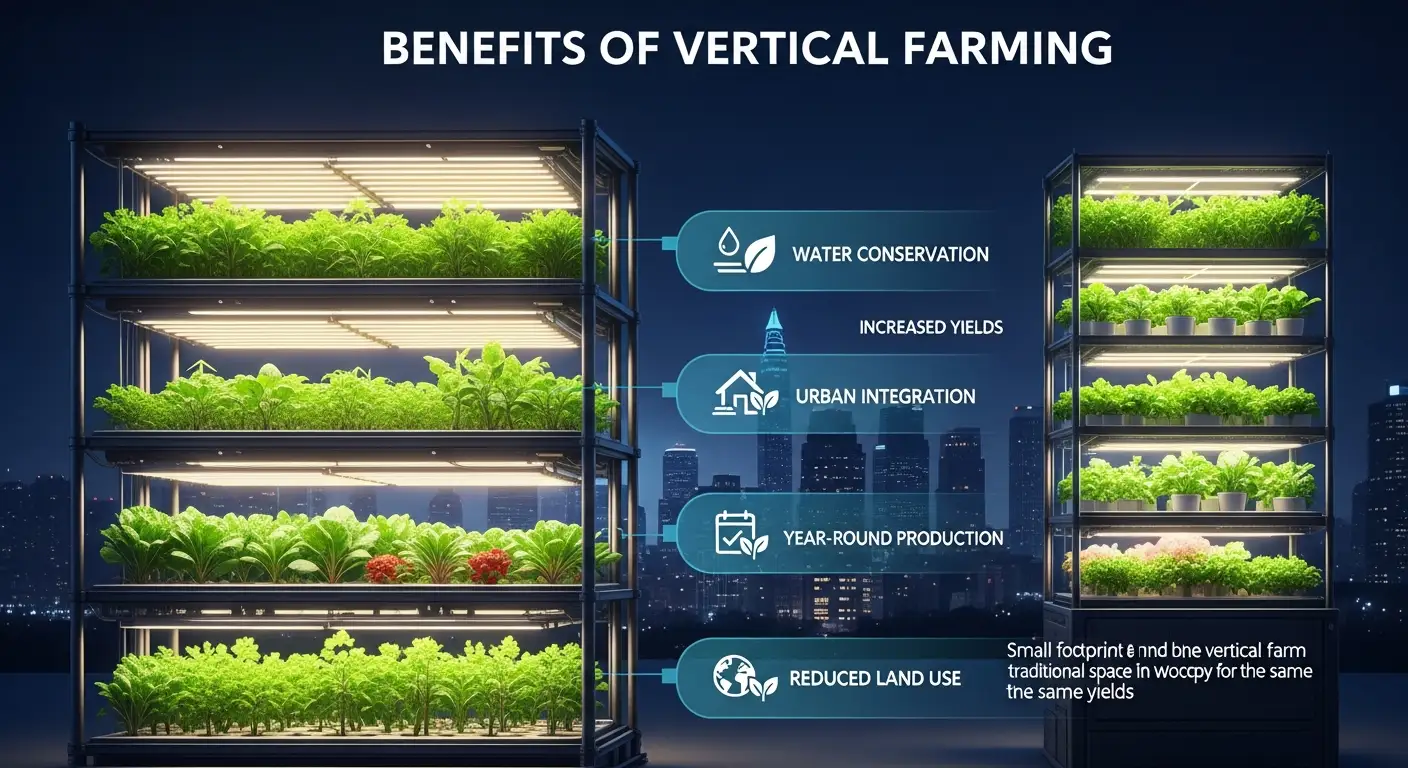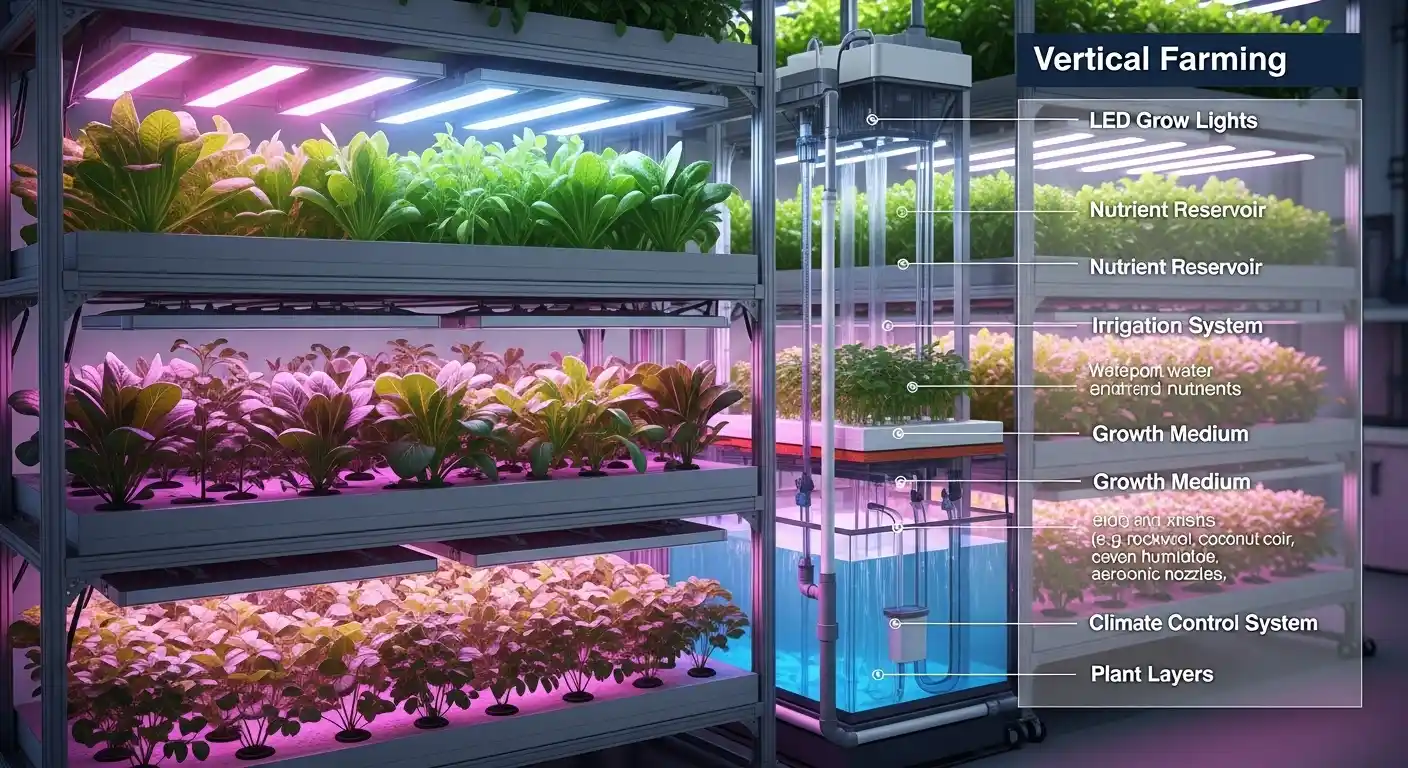Vertical Farming Meaning
Let’s discuss about Vertical Farming. Modern times require modern solutions. With growing demands of variety crops and disputes over lands, farmers have got to opt for solutions that bring in the best for their needs to sustain a livelihood.
What is vertical farming?
To maximize the use of their lands and to yield the best out of harvesting, vertical farming plays a significant role to help the farmers in need. This craft is often practiced in limited spaces particularly in urban areas using CEA method (controlled environment method)
Vertical farming is a modern agricultural need that involves growing crops in a particular manner- as the name suggests, vertically in a stacked layers. Often integrated into buildings, shipping containers or greenhouses designed towers. The entire system uses less soil method like hydroponics, aeroponics, or aquaponics and relies on advanced technology to control temperature, light, humidity, and nutrients — ensuring year-round production.
Benefits of Vertical Farming

- Space Efficiency – Vertical stacking of crops helps farmers use their space efficiently and maximize their yields per square foot of land. Due to it being suitable for city like places, it helps produce more food in limited space. Restricted spaces add onto the benefit of less wastage of water minimizing pest exposure. Land maintenance becomes an easy job because vertical farming reduces land degradation and deforestation pressure.
- Production – Since the farming is done closer to the consumer it helps cut transportation time hence making it a hassle free task to get fresh produce direct farm to table. Since the farming depends upon controlled factors of light, temperature, humidity etc. – it allows sustainability and continuous flow of harvest all year long.
Also read: What is Arable Farming and Its Benefits?
Disadvantages of Vertical Farming
- Financial constrains– High dependency on lighting and temperature build on high infrastructure and electricity costs. The entire idea is based on its modernity, and thus technology demands its price and that is a heft one. Market demands is another factor that brings on the pressure to ensure a sound profit.
- Limited crop variety– A lot of factors hamper with the growth of crops, and thus affecting the variations that farmers want to bring; currently only crops like- leafy greens, herbs and small fruits are what’s suitable for.
- Technical expertise– Since it’s a new modern solution to farming, it requires equal amount of understating the concept, skilled operators and hours of continuous monitoring to bring in a fruitful result.
Solutions to the issues of Vertical Farming
- Renewable energy – Using solar and wind energy to balance out the energy consumptions and to take a load off the financial parameters and can offset electricity use.
- Spreading Knowledge – Government should launch subsidies and spread awareness to promote local and increase sustainable food consumption. Increasing knowledge could help increase chances to develop technologies to grow more crop types and increase variety.
- Automation – Reduce labor cost and increase precision to help get a fruitful and successful result.

